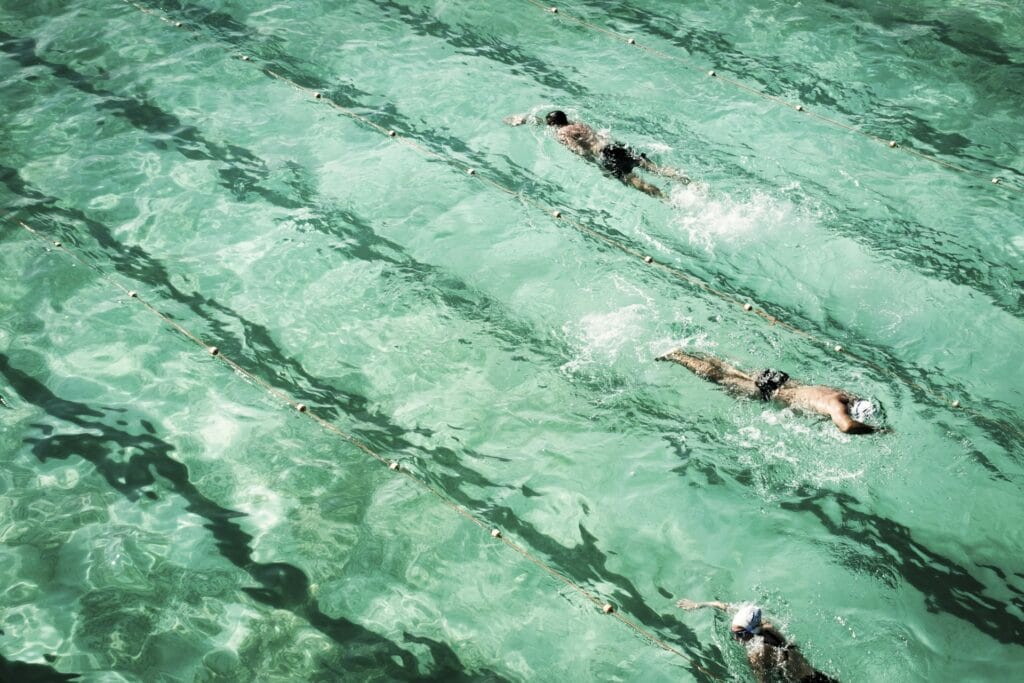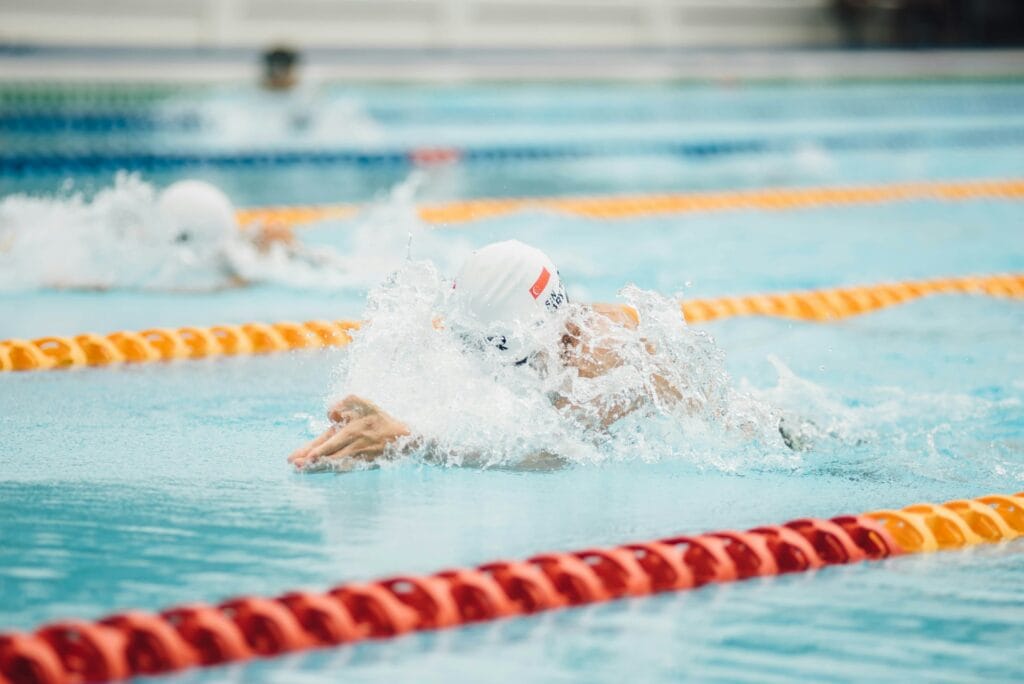Learn about How To Improve Swimming Speed. Discover what swimming is and learn effective techniques, tips, and training methods to improve your swimming speed, stroke efficiency, and performance.
What is Swimming?
Definition and Overview
Swimming describes the process in which an individual self-propels on water, which may be for recreation, sport, exercise, or as a survival mechanism. It is a combination of rhythmic body motions that are used to cut through the water to work the body over resistance through the support of different strokes like the freestyle, breaststroke, backstroke, and the butterfly.
Historical Background
The history of swimming can be traced as far back as prehistoric times, when writings and images depicting it were created in both Egyptian and Roman art. In the 19th century, it took on a competitive form, and the first modern Olympic swimming races were contested in 1896. It has changed over the years to a very technical and disciplined sport.

Benefits of Swimming
1. Full-Body Workout
All major muscle groups are used during swimming, in particular, the shoulders, back, core, and legs. Different musical coordination is needed in each stroke, and so it provides an all-round and moderate workout.
2. Cardiovascular Conditioning
Swimming will boost cardiovascular endurance because heart rate is elevated. It improves lung capacity and maintains blood pressure, making it one of the best aerobic activities.
3. Low-Impact Exercise
Swimming is easy on the body parts (joints and bones) since the water gives buoyancy. This makes it a great activity to do for people with arthritic body parts or injuries. It is usually prescribed on n check-up.
4. Mental Health Boost
Swimming also releases endorphins, which are used to decrease stress and anxiety. Mindfulness and mental alertness are also enhanced by the rhythmic movement and breathing pattern.
5. Life-Saving Skill
In addition to fitness, it is a very important life skill that can be used to avoid drowning, and it is important during emergencies or when there is water water-related adventure.
Understanding the Mechanics of Swimming Speed
The swimmer’s speed depends on two major factors these are stroke efficiency and propulsive power. The less time it takes you to travel through water, and the lower the drag, the quicker you shall swim. Even though water lacks friction with the environment, as in running, it creates a lot of resistance. Thus, minor inefficiencies in the method can cause huge delays.
Key components include:
- Stroke length (distance per stroke)
- Stroke rate (strokes per minute)
- Body alignment and streamlining
- Start and turn execution
How To Improve Swimming Speed
The Quickest Way To Improve Swimming Speed: Technique
1. Work on Your Balance
Having the right balance in the water lowers the drag, and saves your body sleek. Pay attention to the location of the head and control the core to remain in a horizontal orientation that makes movements across a larger range, quicker, and less energy-intensive.
2. Build an Impressive Kick
A good kick enhances muscular power and helps keep the body in position. Not only knees, but also hips should be used to develop power. Kicking is always used to generate power, to increase acceleration, and to add that extra bit of advantage in the sprints.
3. Master Your Pull
The pulling of your arm is essential for progress. Make certain that there is also a high elbow catch with a powerful underwater push. Proper pulling is another way to optimize the distance-to-stroke ratio, enhancing speed and reducing the drag without wasting energy.
4. Get As Long As Possible
Grow your body every stroke and expand reach, and decrease resistance. An extended, sleeker position will assist you in smoothly sliding through water with minimal effort one can have, but with faster and comfortable swimming overall.
5. Rotate From Side to Side
Proper use of the body rotation uses your core and gives you reach. Correct rotation will improve stroke mechanics and breathing, as well as limit drag and improve the efficiency of every arm pull.
6. Work on Your Breathing
Regulated breathing keeps fatigue and stroke rhythm. Bilateral breathing should be practiced to achieve balance and relieve neck stress. It laughs very well at the right time, there are minimal disturbances on your stroke, and endurance and speed are enhanced.
Other Ways To Improve Swimming Speed
1. Work Your Underwaters
The quickest part of a swim is under an underwater dolphin kick. To prolong your underwater phase, work on your core and legs. Underwater systems are competent towards energy conservation and at the same time allow crews the capacity to go fast off starts and turns.
2. Measure Your Progress
Measuring progress is achieved by recognizing strengths and things to work on. To study the shifts in the technique, one may use timing, video analysis, or swim apps. Assessment now and then makes you dedicated, committed, and feel inspired to train harder.
3. Invest in Good Swimming Gear
Quality swimming equipment improves performance, minimizes drag, and makes the individual more comfortable. Training aids such as fins or paddles, anti-fog goggles, and a well-fitted suit can correct the techniques and make you faster and smarter during the training.
4. Start Dry-Land Work
The exercises enhance the coordination and power of the muscles using strength training, flexibility, and mobility training. Train on core, shoulders, and leg power in support of your swim. Land drills enhance stamina and minimize the risks of your body getting injured in water.
5. Practice Deliberately
There should be a purpose in every swim session. Pay attention to certain skills, e.g., stroke technique, turns, or pacing. Conscious practice develops a pattern, strengthens effective habits, and brings about greater gains in terms of velocity and efficiency.

Common Mistakes That Slow You Down
1. Overkicking Without Coordination
The mismanaged kick would mess up your body balance and flow of energy. You should always kick with the arms.
2. Breathing Incorrectly
Elevation of the head may also make the hips descend. Train to side breathe and buzz your breath.
3. Poor Streamlining
Failure to streamline off the wall is a waste of time. Freeze yourself during the start and push off.
4. Neglecting Technique
Plateaus occur when all of the concentration is on speed without also improving technique. Conduct drills and periodic video reviews.
5. Skipping Recovery
Working hard without well-deserved off turns into burnout. The performance includes recovery.
Conclusion
Increasing swimming pace depends on correct technique, correct use of the body, and deliberate training. Minimizing drag, strengthening, preventing errors and mistakes, swimmers can now swim more efficiently and increase their performance with repetitive, concentrated, and feasible practice.
